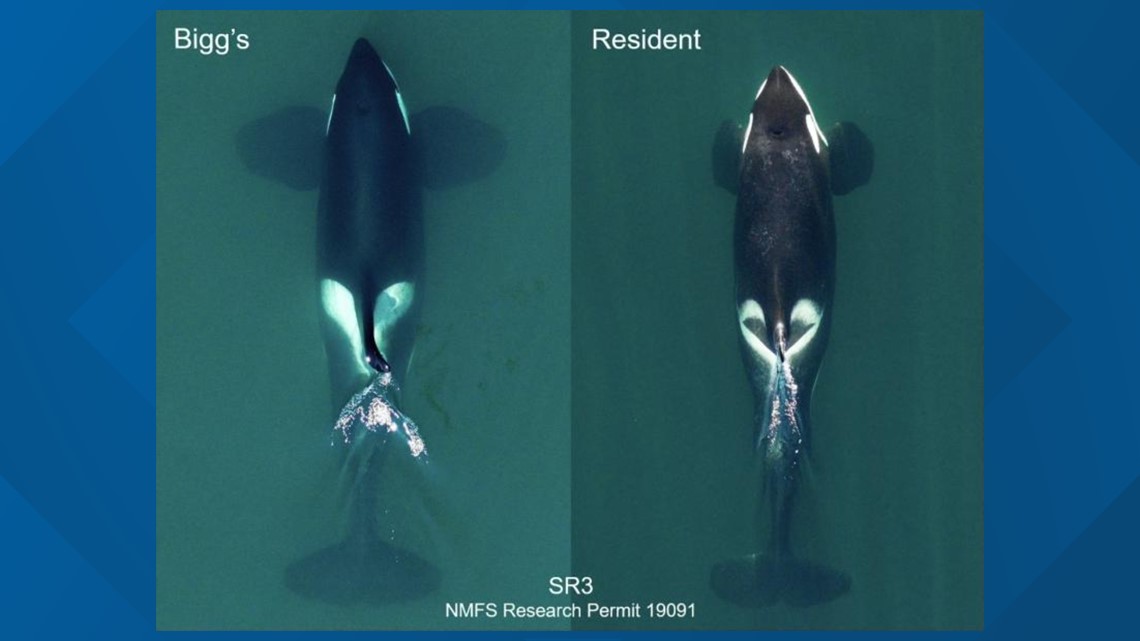SEATTLE — A new report from the National Marine Fisheries Service has distinguished two killer whale species in the North Pacific Ocean areas.
While killer whale experts and the federal government have distinguished the species for decades, scientists in the new report have provided expansive data on what the differences between the species are. The report is part of the National Oceanic and Atmospheric Administration (NOAA).
“It’s the scientific community that’s finally caught up,” said David Bain, chief scientist for Orca Conservancy. The new research comes from improvements in genetic sequencing testing, he added.
The report states killer whales have been considered one worldwide species, but now biologists are recognizing the differences between resident killer whales and Bigg’s killer whales.
Killer whales, also known colloquially as orcas, are found in oceans around the world but those in the North Pacific Ocean are most well-studied, according to NOAA.
“Subsequent studies of genomic data confirm that they have evolved as genetically and culturally distinct groups, which occupy different niches in the same Northwest marine ecosystem,” according to the March 27 report.
Resident orcas maintain “tight-knit family pods,” stay in one area for longer, and prey on smaller marine life, such as salmon. Bigg’s killer whales stay in smaller groups and prey on much larger marine life, such as seals, dolphins or porpoises, according to the report.
Bain said killer whale experts have long known about the differences. In the 1970s, Canadian scientist Michael Bigg found that the two animals did not mix when they were in the same waters, which is “often a sign of different species,” the report states.


In addition to behavior, Bain said the main differences are how the two whale species eat, their physical attributes and their reproductive isolation – meaning they won’t mate in natural conditions.
Resident killer whales have more fragile jaws and smaller teeth, which also allows them to have better hearing than Bigg’s, which have worse hearing and eat marine life that is easier to see underwater.
The two species have “kind of the same paint job,” Bain said, noting the whales’ markings near their eyes, fin shape and saddle patterns. But, “we realized that if you look at them carefully, they’re actually different and these differences are reliable within populations.”
The report shows that resident orcas have smaller dorsal fins and Bigg’s orcas are more distinctly black and white.
“It’s a step forward,” Bain said, adding that the developments could also increase conservation efforts.
As technology and research tools continue to evolve, Bain said more discoveries are in the future.
“We’ll now have residents and Bigg’s as different species and everybody else is ‘orca’ for now, until a similar analysis is done for them,” Bain said. “We’ll probably end up with 10 or 15 species.”
The Taxonomy Committee of the Society of Marine Mammology could make a decision this summer. If approved, both Bigg's and Southern Resident orcas would get their own species names.

